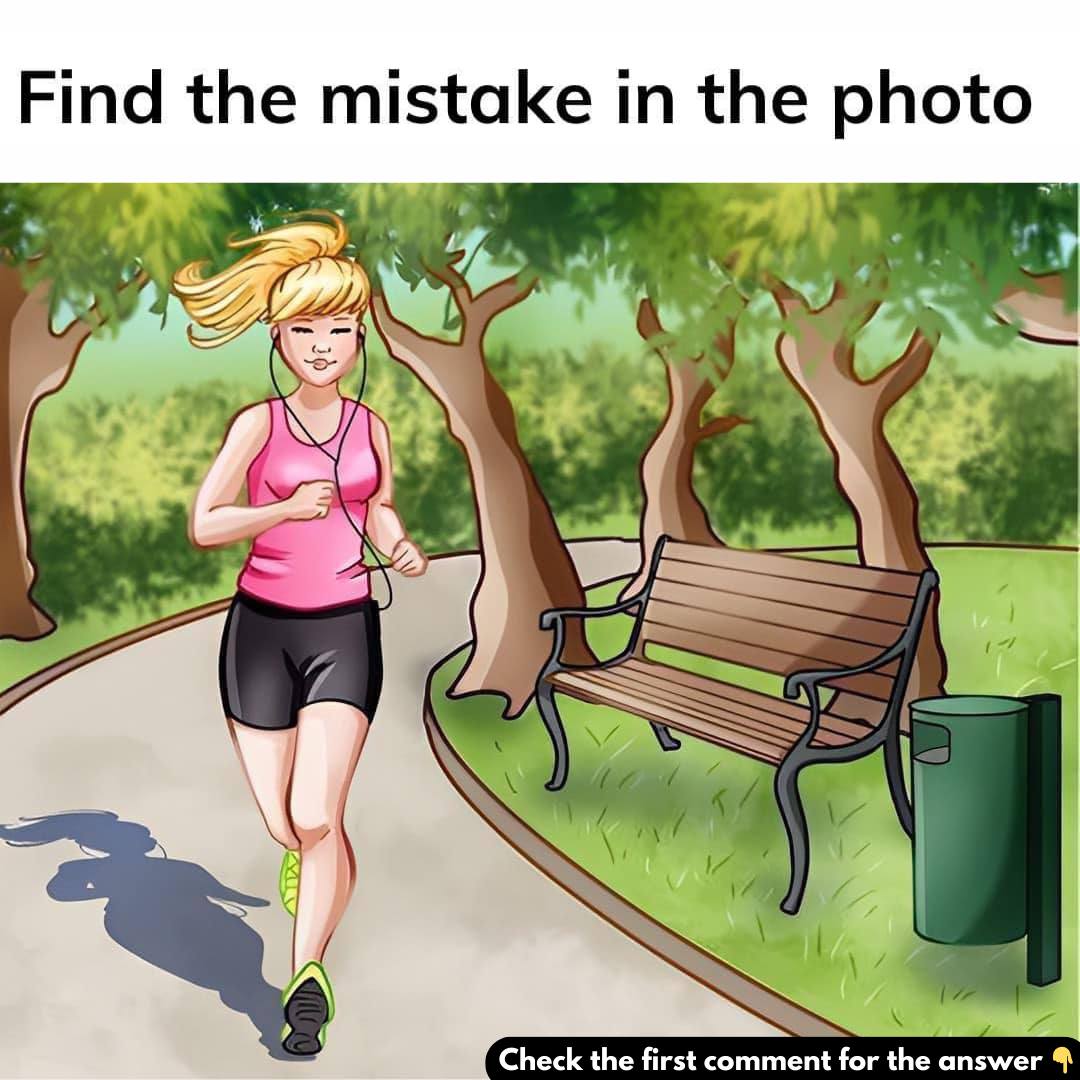Take a good look at the picture of the girl running through the park. At first glance, it looks completely normal—a sunny day, a peaceful park, and a woman jogging with the sun casting a warm glow across the scene. It’s the kind of everyday moment that feels familiar and comforting. But hidden within this seemingly perfect image is a mistake that doesn’t quite fit.

It’s subtle, and that’s what makes this puzzle so clever. These kinds of visual challenges are designed to test how closely you observe details, and they often rely on our brains taking shortcuts. We tend to focus on the big picture first, especially when we’re presented with a scene that appears normal. Our minds are wired to quickly interpret visual information, which is helpful most of the time but can cause us to miss small, important inconsistencies. When we see a jogger in a park, our brains tell us, “This is a typical, real-life scenario,” and we don’t think to question it. But here’s the catch: if you slow down and look closely, you’ll see that not everything in the image follows the natural rules of the world. Let’s break it down and find out exactly what’s off.
Begin by scanning the entire scene. You’ll see the jogger running down a path, surrounded by trees, a park bench, and a trash bin. It all seems pretty standard. Now, zoom in on the details—specifically the shadows. Notice how the jogger has a clearly defined shadow that matches the direction of the sunlight. That’s exactly what we’d expect on a sunny day. But now, check out the bench, the trees, and the trash bin. Something’s not right. None of those objects cast any shadows at all. That’s the big mistake in the image. In real life, when the sun is shining brightly, every object in its path should cast a shadow. It doesn’t matter if it’s a person, a bench, or a tree—they all block light and should create shadows on the ground. The fact that only the girl running has a shadow while everything else appears flat and shadowless goes against the basic laws of light and physics.
This missing detail is what makes the image feel subtly unrealistic, even if you can’t quite put your finger on why at first. So why do so many people miss this mistake? It comes down to how our brains process visual scenes. First, we often focus on the main subject—in this case, the jogger—and assume everything else is just background noise. Second, we naturally expect the world to make sense, especially in familiar situations. A runner in a park is something we’ve all seen countless times, so our brains don’t expect anything to be wrong. And third, when we’re trying to solve a puzzle quickly, we might not take the time to examine every little piece of the scene. But puzzles like this are more than just fun distractions—they’re actually great for exercising your brain.
They sharpen your observation skills, improve your critical thinking, and teach you to look at things from different angles. By spotting what doesn’t belong or identifying tiny inconsistencies, you train your mind to be more alert and detail-oriented in everyday life. Were you able to catch the mistake right away, or did it take a few minutes of scanning the image? Maybe you even thought something else looked off before finding the missing shadows. Everyone sees things differently, and that’s part of what makes puzzles like this so entertaining. It’s not just about getting the answer—it’s about how you get there. And if you enjoyed this challenge, there are plenty more brain teasers and optical illusions out there to keep you thinking and having fun. The more you practice, the quicker you’ll be at spotting what others might miss. In the end, this image is a great reminder that even in the most ordinary scenes, a closer look can reveal something unexpected. The smallest details often tell the biggest stories. So stay curious, keep challenging yourself, and never underestimate the power of paying attention to what’s hiding in plain sight.





